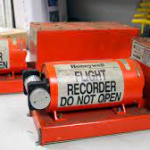It is common to speak of bronchitis when we refer to a “badly cured catarrh”. Along with bronchiolitis (a variant), it is one of the most common respiratory infections in children and the elderly. Although the cold and bronchitis seem the same, they have a very different origin, characteristics, and treatment. We explain it to you in the next lines.
WHAT IS BRONCHITIS?
Every time we breathe, we inhale oxygen through the nose and mouth, which passes through the larynx and trachea until it reaches the lungs through the bronchi. These ducts branch into smaller ones called bronchioles, which in turn end up in tiny air sacs, called alveoli. It is estimated that there are about 300 million alveoli in each lung and are responsible for exchanging oxygen and carbon dioxide. 
The bronchitis is inflammation of the bronchi. That is, those “tubes” that connect the trachea and lungs become inflamed and fill with mucus. This does not allow the air to circulate normally, which causes difficulty in breathing and the typical wheezing (wheezing) when breathing.
It should not be confused with the cold, since the common cold is a viral infection of the upper tract (area of the pharynx and nasal cavity), while bronchitis is inflammations of a lower area of the respiratory system (lower tracts).
Check This Out: Heart Problems and Blood Pressure
ACUTE BRONCHITIS: THE MOST COMMON TYPE
Although there are more types, the most common is to talk about acute or infectious bronchitis. It is caused by the same types of viruses as the cold or the flu, and that is why it often appears when the cold lasts several days or does not heal well. These viruses take advantage when the person is more vulnerable to move towards the lower respiratory tract and infect that area. It is usually more common in young children, asthmatics, smokers and elderly people or with low defenses.
Especially, we must be careful with children and babies since it can lead to bronchiolitis 1, which is an infection in the smaller bronchi or bronchioles. It is estimated that 70% of babies suffer this infection in their first year of life, according to the American Society of Neonatology.
Although we will not delve into it in this article, it is good to know that there is also chronic type bronchitis, whose origin is not a virus but a physical and continuous injury caused by smoking or prolonged exposure to smoke or dust. It causes coughing, difficulty in breathing and abundant mucus. This disease lasts for a long time and, sometimes, it does not get cured at all.
SYMPTOMS OF ACUTE BRONCHITIS
It usually has the same symptoms as the flu: a cough, mucus, and fever. However, you should suspect bronchitis when there is also difficulty breathing, feeling of pressure in the chest and wheezing. It is also possible that a cough is initially dry and then mucus and phlegm begins to appear.
If these symptoms occur, especially difficulty breathing and fever, it is advisable to go to the doctor to make a complete diagnosis and assess the treatment options. Normally, the doctor will need to ask about the symptoms and perform an auscultation. Sometimes, you can also request other tests, such as a chest x-ray to rule out other pathologies.
TREATMENT OF ACUTE BRONCHITIS
Since the cause is viral, most of the time antibiotics are not usually necessary because they are ineffective, although the doctor could prescribe them if he considers that there is a risk of superinfection with bacteria.
Usually, only symptoms are treated while the immune system does its work and eliminates the virus. For fever, antipyretics are often used, such as paracetamol, and cough medicines, such as cloperastine.
In addition, there are a number of very basic tips that can help control it and prevent it from lengthening over time or getting worse:
- It is essential to drink plenty of fluids to help dilute mucus and expel it.
- Tobacco should be avoided as much as possible: both active smoking and being in smoke-laden environments.
- You can take candies, with a base of honey or Aloe Vera, to help clear the throat irritated by a cough.
- In babies, it is important to help them expel the mucus through nose suction.
In general, the recommendations to prevent this disease are the same as those for the flu or the cold. We already talked about them in our post “Flu or cold? Differences and how to treat them “.
Keep Reading: Kidney Failure, An Invisible Disease
Acute bronchitis is a common respiratory infection in the cold months of the year and, although it usually resolves itself with proper care and patience, it is necessary to keep it under control.
You may also like http://gamesplanet.org/7-foods-and-1-drink-to-slim-and-purify-the-body/






















+ There are no comments
Add yours